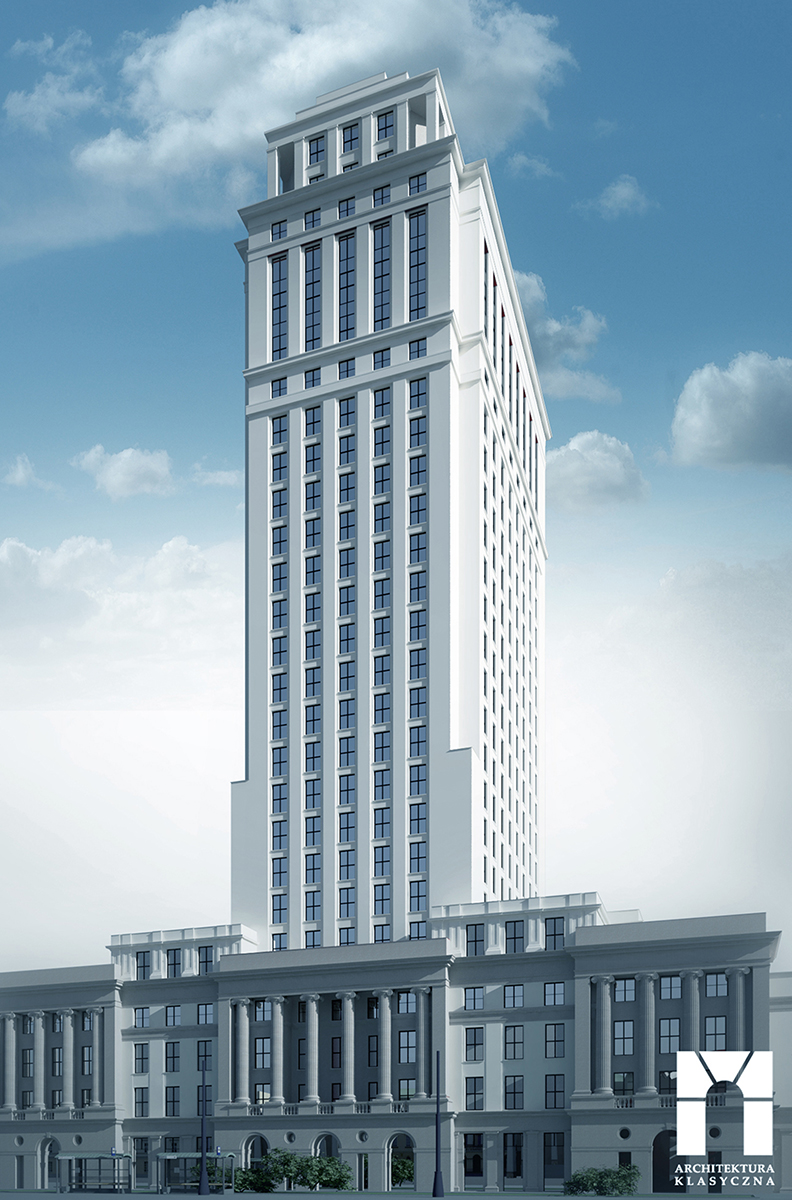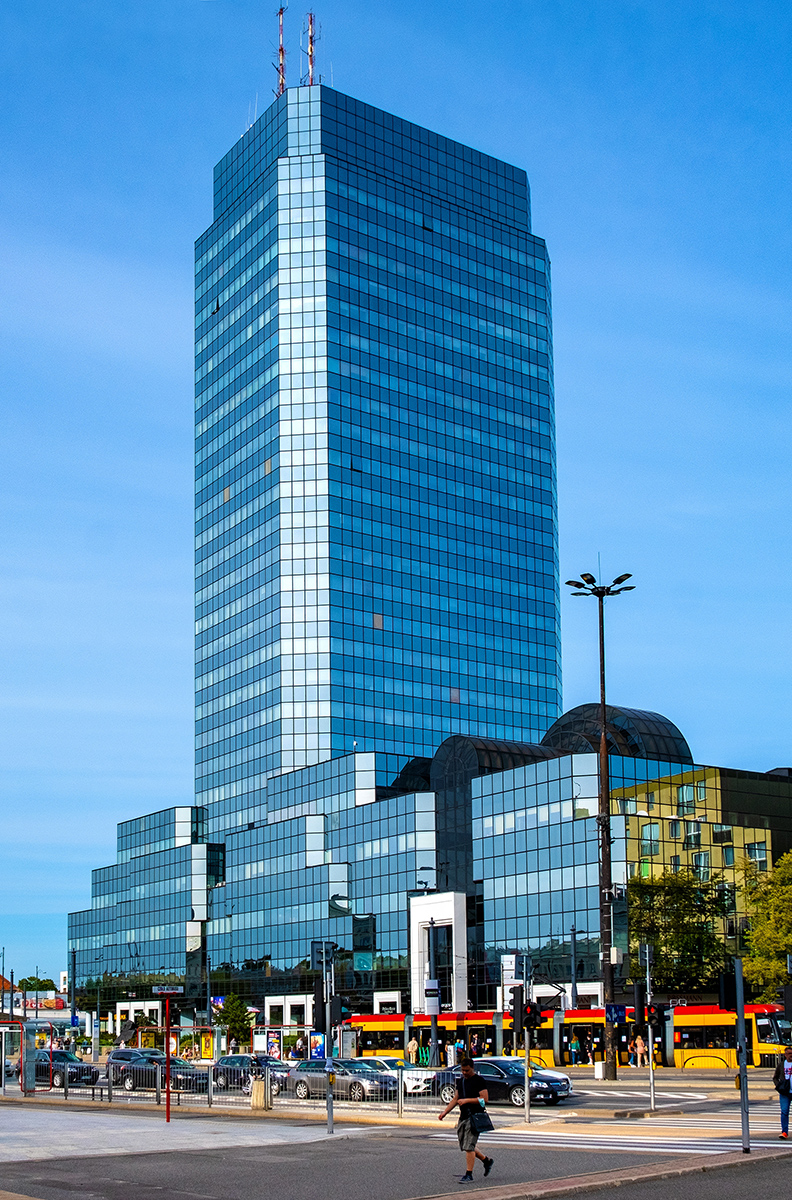TG & MG: Everything started with our interest in the strictly aesthetic values of architecture. The modernist revolution based many of its rules only on ideological premises, so it was natural for us to look for reasonable guidelines in earlier theories of architecture. Sometimes we publish purely classicist proposals to stimulate discussion – but it is rather this well-evidenced, traditional approach to scale and composition that we want to propagate.
Museum of Modern Art in Warsaw (MSN)
“This proposal was obviously a provocation. Is ‘modern’ an exclusive trait superior to our reality, or does it naturally result from everything we design today, no matter how paradoxical it may seem? The Classicist Zachęta building is used to exhibit modern art, so we thought maybe the new modern art museum could follow that successful example.”
How would you introduce Classicism in layman’s terms?
Generally Classicism refers to architectural solutions that originate from Ancient Greece but proved universal enough to be parts of much later buildings. Many recognise Classicist buildings based on the presence of columns and cornices, but such an approach may often be misleading. You’re dealing with Classicism every time a facade seems to tell a detailed, yet comprehensive ‘story’ about how a structure successfully opposes gravity.
Thinking of Warsaw, is there an example of Classicism / Neo-Classicism that you love?
The Grand Theatre. It’s glorious yet not overwhelming thanks to the brilliant fragmentation of the whole. All those separated colonnades may even evoke the impression of chords that build up in a thrilling symphony. The design is so compelling that even the 1960s extension translates the original Classicism into Neo-Classicism.
Is there an architectural style you particularly dislike?
Not really. What we dislike are bad design decisions. Perhaps we’ll make an exception with deconstructivism though, which is based on assumptions that contradict the very essence of architectural art. Also, we can hardly think of a good example of a building which is both big and minimalist: we know from neurology that anything of a significant scale requires a hierarchy of divisions to satisfy the eye.
The Saski Palace project has divided the country – what are your thoughts?
Having a huge void on the square no longer delivers the originally intended, anti-war message. Instead, it disorganises the whole area. It’s as if nothing but meadows have ever been there. We believe that the reconstruction would bring life and harmony back to this place whilst bringing no harm to the memory of the destruction of 1944.
The huge public cost is one of the main issues people have with Saski Palace – is it a price worth paying and is it possible to build beautifully but without the large outlay?
Any facade, either modernist or classicist, constitutes a relatively small fraction of the overall construction cost. Mostly it’s the volume of Saski Palace that has challenged the budget so setting a reasonable purpose for the building is crucial. Nevertheless, you can have cheap architecture that looks expensive or expensive architecture that looks cheap – it’s mostly weird, avantgarde buildings that fall into the second category.

 Pl. Bankowy “One of the square’s frontages is completely traditional and the other completely modernist; this provides an excellent chance to compare the attractiveness of different architectural styles. We wanted to check if there was any way to make the overgrown tower more in tune with the historical part of the site. We were inspired by the Classicist skyscrapers designed in recent times by RAMSA in New York, as well as the 1960s extension of the Grand Theatre.”
Pl. Bankowy “One of the square’s frontages is completely traditional and the other completely modernist; this provides an excellent chance to compare the attractiveness of different architectural styles. We wanted to check if there was any way to make the overgrown tower more in tune with the historical part of the site. We were inspired by the Classicist skyscrapers designed in recent times by RAMSA in New York, as well as the 1960s extension of the Grand Theatre.”What are your thoughts on modern day Warsaw from an architectural perspective?
For the last 200-years Warsaw has been a testing ground for architectural theory. As a consequence, today we deal with a chaos of a potentially picturesque quality; the architecture should be framed by a unified ‘staffage’ and urban furniture. We think that the new infills in the Midtown area could be designed in the style of Stifelman and Weiss which fit Warsaw excellently.
How do you want people to respond to your projects?
We always hope to weaken some fallacies that people have gotten used to – for example, that ‘contemporary’ equals ‘modernist’, or that it’s somehow impossible to have traditional buildings anymore.